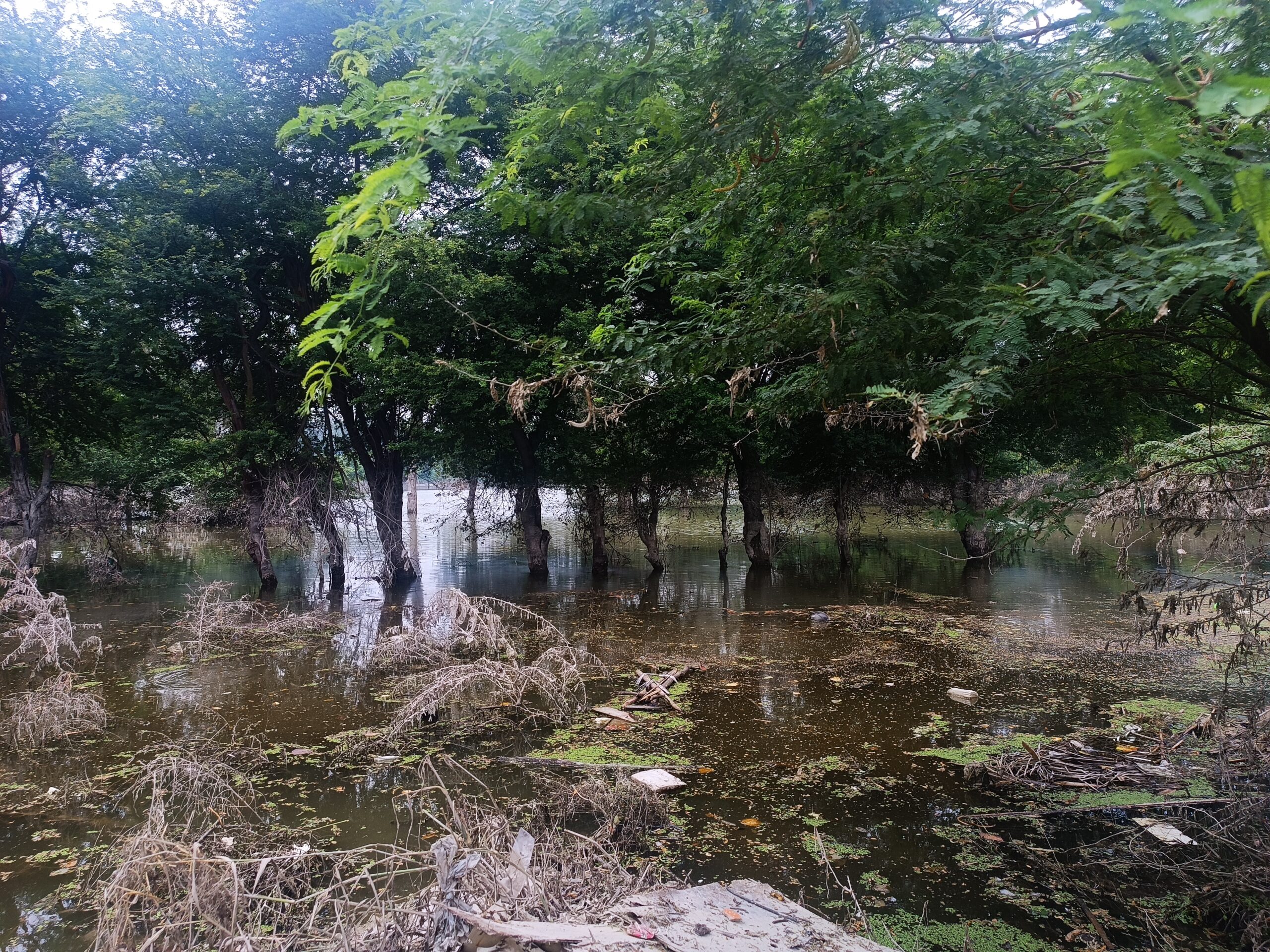
Inundated: Afforested land post the floods near Yamuna Bank
The River Yamuna in Delhi this year reached the highest water-level in more than five decades. For a large majority of Delhi residents, who have in their living memory seen the Yamuna as nothing but an oversized toxic sewer, the spectacle of the submerged Kashmere Gate-ISBT and waters swirling through the streets of tony Civil Lines is perhaps a sight of a lifetime, a glimpse of a mighty river that once was.
This majority could be forgiven for thinking the Yamuna is acting up, because it is not common knowledge that much of what is submerged today is essentially built on what was meant to be the river’s breathing space. Called a floodplain, this space is meant to function as the national capital’s personal water recharge kit, collecting surplus water to replenish the city’s aquifers.
The Land and Development Office, Ministry of Housing and Urban Affairs, has allotted over 700 acres of land to the Delhi Metro Rail Corporation (DMRC) for compensatory afforestation. The plantation drive aims to plant trees in lieu of those felled for metro construction activities.
According to the Ministry of Housing and Urban Affairs, “compensatory tree planting is being carried out in a ratio of 1:10, i.e. 10 trees are being planted for the loss of one tree”.
However, due to shortage of land, majority of these trees are being planted on the Yamuna river floodplain. Many experts have raised concerns about these afforestation drives — their efficiency and impact.
Manu Bhatnagar, a Delhi based environmentalist, said, “There is no blanket ban on plantation of trees on the floodplains. If they are naturally there, it is fine. The floodplain has naturally occurring aquatic grasses or riparian grasses. These provide habitat to various fauna and keep the river clean.”
Grasses are certainly far more preferable than trees and help in binding the soil. All riparian grasses have deep roots which bind the soil together and prevent the banks from being eroded. Thus, planting trees over a floodplain is unnatural, added Bhatnagar.
A presumption in these and similar tree plantations underway or planned in active floodplains of rivers seems to be that this is a benign, desirable, harmless and worthy activity.
However, time and again, experts have questioned the effectiveness of such compensatory afforestation drives on the floodplains.
“Planting trees is often proposed as a solution against the ecological and environmental concerns with respect to rapid deforestation for industrial activities but mindless afforestation is not going to solve this crisis,” said Bhatnagar.
Over the years, structures like Commonwealth village, Akshardham temple and metro service yards have been built, constricting the flow of the Yamuna river.
According to Delhi’s Master plan, 30-40% of the floodplain land will be available for “regulated development”.
The recent flood in Delhi swept away a lot of such afforestation drives.
“We planted over 80,000 trees near the Yamuna floodplain near Yamuna Bank one year ago. Most of these trees are likely to survive if the water recedes before two weeks,” said Pramod Kumar, the District Forest Officer (DFO), Noida.
However, a visit to the floodplain near Yamuna Bank revealed how most of the planted trees did not survive.
“Trees may not survive the force of the flood unless they are native to that area or have come up naturally. Trees close to the bank can be uprooted by the flow of the water, especially during the course of the flood,” added Bhatnagar over the question whether such plantation drives help in binding the soil.
Kumar, however, claimed that the plantation drive is going to be beneficial for the ecology of the city in the long run.
On the question of whether trees could constrict the flow of the river, Kumar said the plantation drive had no relation with the overflowing of Yamuna.
“The flooding is majorly due to partial opening of barrage at ITO and excessive construction on the Yamuna floodplains.”
Since the flooding and waterlogging began, political parties have cited many reasons behind the overflowing of Yamuna including the release of water from Hathnikund dam and excessive rain.
However, the reason needs to be investigated scientifically to save Delhi from similar water-logging in the coming future.
“It needs to be investigated, rather than saying this is wrong. It needs to be seen that, has the river bed come up? Is there too much silt in the river? Even if silting was there, it wouldn’t have happened in the course of one or two years,” suggested Bhatnagar on the question of why Yamuna is overflowing near Delhi.
The partial opening of Okhla, ITO barrage and construction near the DND flyover also call for an investigation, he added.
The four cases are linked to the land-for-jobs and IRCTC scam, which are being probed…
This was followed by the Delhi Development Authority (DDA), which addressed 4,804 of the 5,197…
These local stores stock thicker jackets, practical sweaters, and everyday layers that are designed for…
Veer Ahlawat’s final-round 67 sealed a three-shot win at the Rs 1 crore CIDCO Open…
OnePlus has launched the 15R smartphone and Pad Go 2 tablet in India, with prices…
Nearly 2,800 Delhi vehicles denied fuel on first day of 'No PUC, No Fuel' drive…